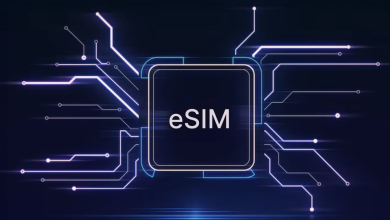High-quality document falsification once required specialist skills or expensive software. That is no longer the case. Today, lightweight artificial intelligence tools allow almost anyone to produce convincing fake diplomas, contracts or identity documents in seconds.
This is now a serious risk for UK organisations in every sector, not only finance but also human resources, legal and compliance. Recent figures show that 35 per cent of UK businesses faced AI-related fraud in the first quarter of 2025, up from 23 per cent the year before. The speed of this rise shows just how fast the threat is growing.
Synthetic identities, manipulated contracts, and fabricated evidence can all be used to bypass existing checks. Even routine processes such as staff onboarding or contract approvals can be undermined. If organisations rely only on human reviewers or visual checks, they may be unable to spot what is genuine and what is false. The attack surface is expanding, and defences must keep up.
A major driver of this risk is the rapid release of powerful open AI models. For example, Alibaba recently unveiled its Qwen-3 family of hybrid reasoning models, which can generate sophisticated text and visual content with minimal expertise. Tools of this type can be misused to create forged documents at scale, turning what was once a fringe risk into a mainstream security challenge for businesses worldwide.
Electronic Signatures as the Front Line of Defence
The most reliable defence against forged documents is the use of secure electronic signatures. There are certain types of electronic signatures, such as Advanced Electronic Signatures (AES), Qualified Electronic Signatures (QES) and digital signatures, that provide cryptographic protections that tie the signer’s verified identity to the document. These electronic signatures make any tampering visible and preserve the integrity of the file. For example, advanced and qualified electronic signatures can provide a very strong legal and technical assurance.
Depending on the signature solution electronic signatures also create a full audit trail. With the right solution, electronic signatures don’t just secure your document—they can also deliver a full audit trail. This includes the identity of the signer, the time of signing and validation by a trusted authority. For teams in legal, compliance or HR, this audit trail offers a high level of trust and reduces the chance of disagreements. It also allows organisations to prove the authenticity of documents in court or regulatory investigations.
In practice, this means organisations can speed up everyday processes with greater confidence. Contract approvals, supplier agreements and staff onboarding can all be completed faster when electronic signatures remove the need for repeated manual checks. By cutting out uncertainty, businesses not only strengthen security but also improve efficiency across critical workflows.
The Regulatory Landscape: eIDAS and eIDAS 2.0
Regulation adds another layer of certainty. The UK has retained its own version of the eIDAS framework after Brexit, which means qualified electronic signatures remain legally binding. This continuity gives businesses confidence that electronic signatures carry weight in contracts, legal disputes and compliance matters. It reassures organisations that their investments in signature technology are protected by law.
At the same time, the European Union is preparing to roll out eIDAS 2.0, an ambitious update to its digital identity and trust framework. The changes will include the introduction of digital identity wallets, stricter standards for trust services and much stronger guarantees for cross-border compatibility. For UK firms with European partners or operations, this shift will be significant. Understanding and planning for these requirements now will avoid disruption later.
Those who act early will gain more than compliance. Early adopters will stand out as credible, future-ready businesses that can demonstrate their documents and processes meet the highest levels of security and trust. In a competitive market, being interoperable and aligned with eIDAS 2.0 can help firms win contracts, reassure regulators and build stronger international relationships.
Practical Steps for UK Organisations
There are steps that every organisation can take now to reduce its exposure:
1. Adopt Advanced (AES), Qualified (QES), or qualified digital signatures — and move away from Simple Electronic Signatures (SES). Digital signatures use certificates issued by trusted providers, ensuring the signer’s identity is verified, the document’s integrity is preserved, and the signature carries strong legal validity. AES and QES, provide a high level of security: they not only make any tampering immediately visible but also deliver robust legal assurance, with QES offering the same legal standing as a handwritten signature in the EU.
2. Integrate signing into workflows – apply signatures within document systems, not as a separate step. This reduces errors and stops documents from being intercepted before they are secured.
3. Automate version control and auditing – use tools that preserve audit trails and track every change. This cuts down on human error and ensures visibility across departments.
4. Train staff to spot risks – even with signatures, employees should know how to recognise suspicious signs, such as inconsistent formatting or metadata changes.
5. Stay updated on regulations – monitor eIDAS 2.0 developments and prepare for identity wallets and new trust frameworks. Planning early will avoid rushed compliance later.
Building Resilience for the Future
AI-enabled forgery is no longer a marginal concern. It is already affecting a third of UK businesses and is growing quickly. Organisations that underestimate this risk may face reputational harm, financial loss and legal problems. Yet, the tools to respond already exist.
By embedding secure electronic signatures into everyday workflows, maintaining robust audit trails and aligning with regulatory changes, UK businesses can protect themselves. Those that prepare for eIDAS 2.0 will also strengthen their international standing. The future of document trust will rely on cryptographic assurance and cross-border identity systems.
Organisations that act now will not only defend against fraud but also show partners and regulators that they are ready for a world where authenticity cannot be taken for granted.




